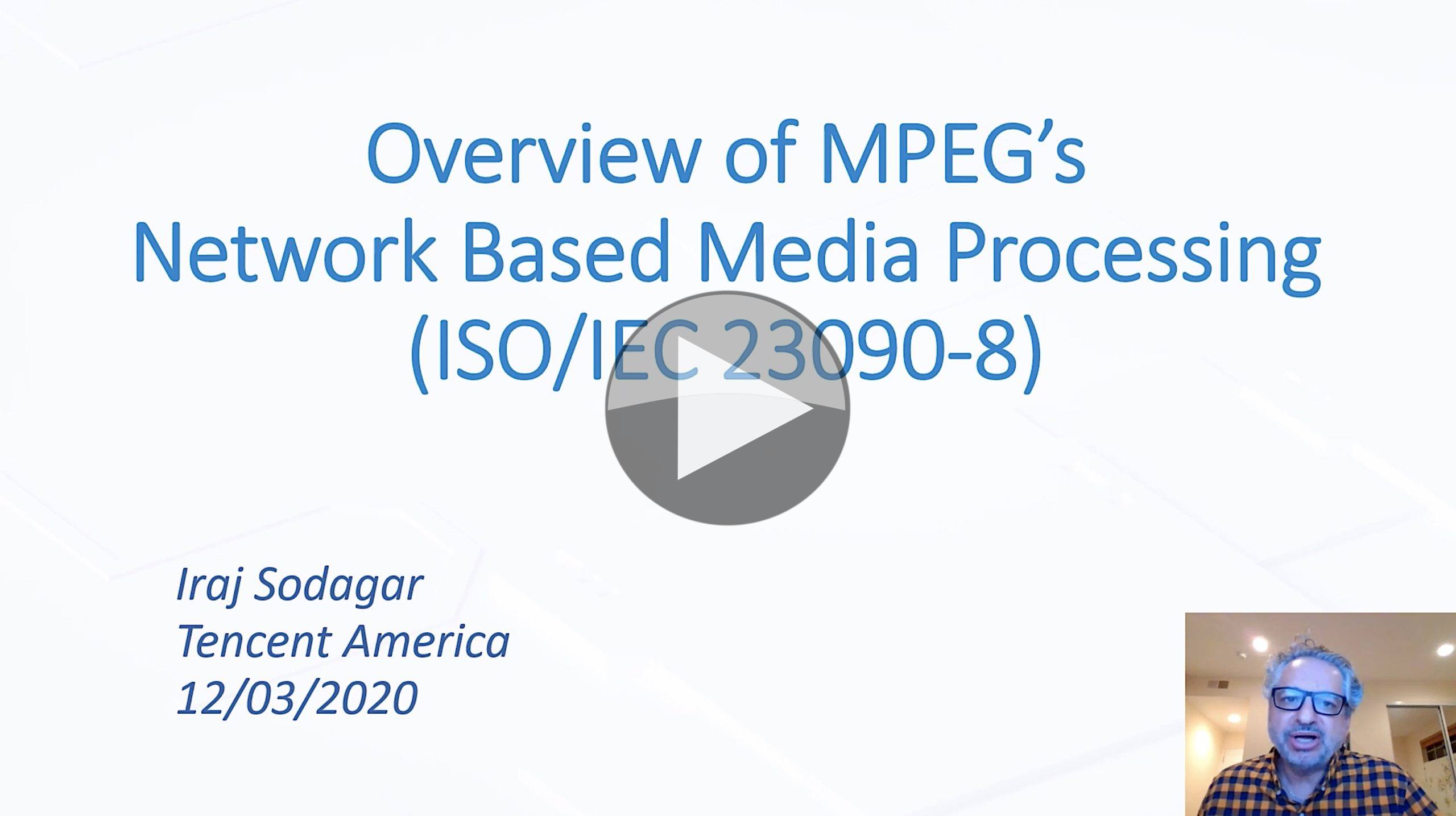Building complex services from microservices not simple. While making a static workflow can be practical, though time-consuming, making one that is able to be easily changed to match a business’s changing needs is another matter. If an abstraction layer could be placed over the top of the microservices themselves, that would allow people to concentrate on making the workflow correct and leave the abstraction layer to orchestrate the microservices below. This is what MPEG’s Network-Based Media Processing (NBMP) standard achieves.
Developed to counteract the fragmentation in cloud and single-vendor deployments, NBMP delivers a unified way to describe a workflow with the platform controlled below. Iraj Sodagar spoke at Mile High Video 2020 to introduce NBMP, now published as ISO/IEC 23090-8. NBMP provides a framework that allows you to deploy and control media processing using existing building blocks called functions fed by sources and sinks, also known as inputs and outputs. A Workflow Manager process is used to actually start and control the media processing, fed with a workflow description that describes the processing wanted as well as the I/O formats to use. This is complemented by a Function Discovery API and a Function Repository to discover and get hold of the functions needed. The Workflow Manager gets the function and uses the Task API to initiate the processing of media. The Workflow Manager also deals with finding storage and understanding networking.
Next, Iraj takes us through the framework APIs which allow the abstraction layer to operate, in principle, across multiple cloud providers. The standard contains 3 APIs: Workflow, Task & Function. The APIs use a CRUD architecture each having ‘update’ ‘Discover’ ‘Delete’ and similar actions which apply to Tasks, Functions and the workflows i.e. CreateWorkflow. The APIs can operate synchronously or asynchronously.
Split rendering is possible by splitting up the workflow into sub workflows which allows you to run certain tasks nearer to certain resources, say storage, or in certain locations like in the case of edge computing where you want to maintain low-latency by processing close to the user. In fact, NBMP has been created with a view to being able to be used by 5G operators and is the subject of two study items in 3GPP.
Watch now!
Speaker
 |
Iraj Sodagar Principal Researcher Tencent America |
Iraj Sodagar,
Tencent America


